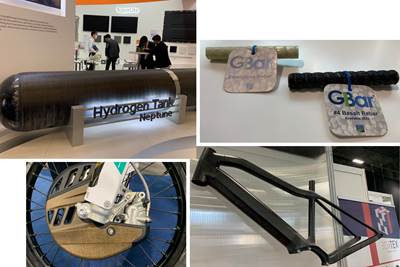JEC World 2023 highlights: Recycling, biocomposites, smaller equipment and expanding brands
CW senior technical editor Ginger Gardiner addresses some of this year’s hot topics, ranging from novel biocomposites and recycling technology solutions from myriad startups to upgraded, but equally sustainable, equipment from well-established companies.
JEC World 2023 appeared to be back to pre-pandemic levels of activity, providing the expected “fire hose” of new composites products and technologies. Without a doubt, sustainability was the hot topic, from myriad hydrogen storage tanks on display to new recycling technologies and recycled materials to new biocomposites and, not least, smaller, more energy-efficient equipment. What follows are a few selected highlights:
New recycling
Nova Carbon exhibited its recycled carbon fiber semi-products (left), as well as rCF from partner MANIFICA (center) and a prototype running shoe by Decathlon (right), reportedly its first using a carbon fiber composite sole/plate. Photo Credit: CW
Nova Carbon (Bordeaux, France), a spin-off of the European consortium MANIFICA Recycling, exhibited in JEC World’s Startup Booster area. “We are recycling and realigning carbon fiber from dry scrap or depolymerized CFRP [carbon fiber-reinforced polymer] products,” says CEO and cofounder Hugo Cartron. “Thus, we are preserving the length and performance of the fiber. We are textile specialists making semi-finished products from recycled carbon fiber [rCF]. Our Long Fiber Realignment technology has been developed and patented by the University of Bordeaux. The equipment they have developed produces continuous tape made from rCF. Nova Carbon will continue developing this technology to produce rCF semi-finished products at scale.”
Nova Carbon displayed realigned rCF dry tapes from its partner MANIFICA and prototype made using this material, including a CFRP shoe sole made by MANIFICA with the French sports products innovator Decathlon (Villeneuve-d'Ascq), and the first pultruded flat plates made with realigned rCF tapes by Epsilon Composite (Gaillan, Médoc, France), another key collaborator.
PhYre recycled carbon fiber (left) is produced by Extracthive using a patented solvolysis process, which it claims can maintain fiber lengths up to 80 centimeters and longer with thermoset or thermoplastic composites. Photo Credit: CW
PHYre is a high-quality, low environmental footprint recycled carbon fiber produced by Extracthive (Sorgues, France). “We have been developing a recycling approach for composite materials since 2016, based on an innovative solvolysis process,” says president Frédéric Goettmann. “This patented process produces clean and undamaged carbon fiber.” The company cites modulus and breaking strength the same or better than virgin carbon fiber. “Our process also uses much less energy than pyrolysis, offering a reduced carbon footprint of around 4.5 kilograms CO2 per kilogram of fiber. Our goal is to continue development for even further reductions.”
Extracthive has already scaled from 1 to 100 to 1,000 kilograms (1 metric ton) per day via three different national and European-funded projects from 2018 to 2022. It is now commissioning an industrial-scale demonstrator, targeting 20 tons of rCF/day in 2024, with plans to scale to 500 metric tons/day by 2025 and install second and third plants in 2028 and 2030, respectively.
“We are still working on applications using this rCF,” says Goettmann. “We can recover complete sheets of textiles and are demonstrating use of these in French racing boats. We are also demonstrating use of chopped rCF in BMC [bulk molding compound] with epoxy resin, which then can be used in medical applications such as X-ray tables. We can go up to fiber lengths of 80 centimeters, and even 1-2 meters is feasible with an appropriately sized reactor, of course — but for now manufacturers are only asking for rCF in lengths of 3-50 millimeters.”
“We are also working with a company producing hydrogen tanks to implement our technology in order to unwind their tanks and reclaim the carbon fiber,” he continues. “We recover 90-95% of the acids we use during solvolysis and employ heat recovery as well. Our process can be used with a large range of thermoset and thermoplastic composites and we can also recover the polymers.”
ReCarbon panel made using rCF “forged-like” prepregs (left), rCF/PP organosheets and thermoformable foam-cored sandwich panels (bottom right). Photo Credit: CW
ReCarbon (Busto Arsizio, Italy) was founded in 2022, but its origins reach back 4-5 years ago when the company’s president, Paolo Grati, began to receive requests for recycling solutions from clients of his composites consulting company, GPMC.
GPMC brought together a team of experts and began collaborating with prime recycling companies, explains Patrick Pacchetti, project manager at ReCarbon. He adds that ReCarbon provides the crucial link between these recycling companies and the actual industrial market. “We ‘closed the loop’ in the carbon fiber recycling chain. We now manufacture rCF intermediate products in both thermoset (prepreg) and thermoplastic forms. Our Replate organosheets are up to 1.3 meters wide and more than 2 meters long. Compared to virgin glass fiber/PP LWRT [lightweight reinforced thermoplastic] products, our rCF materials are 4-5 times stiffer, which allows for up to 45% less weight for typical applications like underbody and door panels, wheelhouses, etc.”
ReCarbon also has a family of products using 100% rCF with thermoset epoxy prepreg, made with a hot melt impregnation line. Pacchetti says these materials can be autoclave cured for 1 hour at 120°C. “For specific tooling applications, a 50-70°C curing temperature is also possible, while a 5-minute cure at 150°C is used for compression molding. We have also developed a ‘forged-like’ version using chopped rCF, similar to an SMC [sheet molding compound] product, but able to be processed in an autoclave or press at 6-7 bar and 30 bar of pressure respectively, instead of almost 100 bar for the SMC process.”
In addition, ReCarbon offers its Recomb line of composite sandwich products using different combination of thermoset and thermoplastic rCF skins and cores (honeycombs, foams). Among these is a fully thermoplastic, thermoformable sandwich panel made with rCF skins and PET foam.
HRC Group exhibited compression molded parts made using its in-house produced rCF/PP materials including an insert for an automotive CFRP wheel (top) and a concrete formwork panel (bottom). Photo Credit: CW
HRC Group (Shanghai, China) offers advanced composites solutions for the automotive, aerospace, construction and industrial markets. In addition to its exhibit of an X2 eVTOL aircraft, for which it manufactures more than 100 CFRP parts for the OEM, XPeng HT Aero (Guangzhou, China), HRC displayed its latest developments in recycled carbon fiber. The company’s 50,000-square-meter main production facility is located in Changshu, a roughly 90-minute drive from Shanghai. “Next to this, we have recently added a 20,000-square-meter aerospace facility which features a pyrolysis-based system for recycling carbon fiber as well as a prepreg line and an SMC line for reformatting the rCF,” says Slavko Karas, sales/program manager EU. He pointed out two applications on display using rCF/PP materials. The first is an insert for a CFRP automotive wheel made with a prepreg outer shell and rCF SMC on the back side. The second is a formwork for poured concrete made from chopped rCF/PP using compression molding. “This forming mold can be used 200-300 times,” he explains, “where a wooden one can be used only twice.”
New biomaterials
Since 1969, Ranger (Briosco, Italy) has been involved with SMC toolmaking, parts molding and engineering, adding resin transfer molding (RTM) in 2002 and creating a composites development center in 2015. In 2023, it launched Green Moulding Compound (GMC) made from bioresin and natural fibers.
Ranger now offers a biocomposite startup accelerator, providing its expertise from feasibility to business plan, materials to manufacturing and investors. An example is the startup Hikari which is using GMC for Hedera indoor gardening systems.
GMC is made from flax fibers impregnated with a polyester resin that is 50% by weight from renewable resources. The mineral-based fillers used in conventional BMC/SMC have been replaced by processing waste from food production. Hikari has completed studies of the GMC material in collaboration with the Polymers and Composites department at the University of Ferrara (Italy), determining that equivalent kilograms of CO2 during production decrease from 2,243 for conventional SMC/BMC to 938 for GMC — a ≈60% reduction.
Dongnam Realize (Daejeon, South Korea) transitioned from a startup booster award winner at JEC World 2022 to this year having its own boothto exhibit its CXP cellulose cross-linked polymer. CXP pellets are made from forestry byproducts or plant matter and can reportedly be used with conventional injection molding and extrusion machines, offering a price similar to conventional plastics. However, it is non-toxic, non-polluting, will char like wood if burned and is recyclable. CW recently reported on Anybrid’s (Dresden, Germany) trials of CXP materials in its robotic overmolding/injection molding technology. Dongnam Realize is very interested in such trials, and is seeking partners with reinforcements and fillers for developing a range of CXP composites.
Smaller equipment, improved sustainability
Carbon Axis (La Rochelle, France) again exhibited its XCell automated fiber placement (AFP) system, but this year showcased its new XPlace² modular AFP head with onboard spools that can be mounted in bigger robots to manufacture larger parts. “The idea of the head is to keep it modular and flexible for the customer so they can choose between different spool configurations and adapt it to their application,” explains Carbon Axis cofounder Chiemi Avila Mori. “The new head will be available as a standalone unit by the end of 2023 and will be integrated in new machines that we are developing.”
Meccatronica’s E-Form servo-electric presses offer high-quality composite parts production with up to 75% reduced energy consumption. Photo Credit: CW
Meccatronica (Preganziol, Italy) displayed its E-Form range of servo-electric presses, which offer high-quality yet energy-efficient thermoforming of composite parts. As an alternative to traditional hydraulic presses, E-Form fully electric technology offers up to 75% less energy consumption, reduced maintenance thanks to no valves, tubes or oil disposal, greater cleanliness and precision. Forming force available ranges from 20 to 100 tons with a working temperature up to 220°C. A dedicated and autonomous thermoregulator for each plate is one part of the overall system’s design for reliability and reproducibility of high-quality composite parts.
OneJoon end-to-end ovens offer reduced energy use and improved efficiency versus traditional center-to-end ovens (bottom) used in oxidation during carbon fiber production. Photo Credit: CW
OneJoon (Suwon, South Korea) produces a variety of thermal processing lines, including oxidation ovens, which are the largest energy consumers during carbon fiber production. At JEC 2023, OneJoon highlighted its new end-to-end airflow oxidation ovens which reduce energy use and improve efficiency versus traditional center-to-end airflow ovens. The latter use a central plenum to distribute heated air from the center of the oxidation oven stacks to each end. Typical 3-meter-wide carbon fiber oxidation lines use three stacks of two ovens, where each central-to-end oven requires two fans and two gas burners/electric heater banks. End-to-end ovens cut this equipment in half, requiring only one fan and one burner/electric heater bank. The central plenum is also eliminated which streamlines and improves air distribution. This aids in oxidizing the polyacrylonitrile (PAN) precursor fiber uniformly, which is key to overall process efficiency and minimizing fire risk.
Known names, new offerings
As a company, bigHead Bonding Fasteners (Verwood, U.K.) have long been respected for its knowledge of joining composites. At JEC 2023, bigHead was showcased as one of two composites- and plastics-focused brands now part of the Bossard Group (Zug, Switzerland). Bossard is focussing on solving composite fastening challenges, working with designers, manufacturers and assemblers in the aviation, automotive, electric vehicle (EV), rail and energy industries.
The other brand on display was MultiMaterial Welding (Biel, Switzerland), an innovative fastening technology platform enabling lightweight, multi-material designs. Applications include replacing glued connections in lightweight sandwich panels made with Nomex or PP thermoplastic honeycomb cores, enabling certification to aerospace and other industry standards. Other systems enable joining dissimilar thermoplastics as well as very thin materials (<2.5 millimeters) without creating marks.
The process is also remarkably swift, reportedly taking 1 second, and can be fully automated. Moreover, by eliminating adhesives, MultiMaterial-Welding enables recycling products at the end of their use/service life.
Mitsui Chemicals (Tokyo, Japan) is a well-known supplier of PP used in composites applications, including long glass fiber-reinforced (LGFPP) compounds and Tafnex carbon fiber-reinforced PP UD tape. Tafnex is made using carbon fiber from Formosa Plastics (Taipei City, Taiwan) and a special grade of PP developed by Mitsui Chemicals, as well as sizing for the carbon fiber, “that guarantees full impregnation of the UD tapes because normally, it is difficult for carbon fiber to bond to PP materials,” explains René Laschak Pinto Gonçalves, technical expert for new business development composites & mobility for Mitsui Chemicals Europe.
Mitsui Chemicals Tafnex materials in (top right, clockwise) overmolded tubes, aesthetic demonstrators of its chopped tape sheet materials, long fiber thermoplastic (LFT) pellets made from a recycled car bumper beam and the Junichiro Yokota Studio benches made from Tafnex production waste. Photo Credit: CW
The possibilities of Tafnex were explored at JEC World 2023 via displays of thermoformed/hot pressed composite parts and sheet materials using chopped Tafnex tapes and pipes made by Inometa(Herford, Germany) and overmolded inline using Anybrid’s robotic ROBIN system. Potential use of Tafnex for furniture and consumer goods was illustrated by benches and seats designed by Junichiro Yokota Studio, using corrugated, U-shaped moldings nested to provide geometrical locking and rigidity. These Tafnex structures presented an aesthetic finish similar to marble or black quartz but at a fraction of the weight, offering high stiffness and strength combined with toughness and water/chemical resistance. These structures can be also used with overmolding technologies to combine aesthetics and functionalization typical with thermoplastics. The molded furniture also demonstrated sustainability by combining and thermoforming chips generated during Tafnex production, which were previously treated as waste.
Recyclability of Tafnex has also been shown by shredding sheet material wastes and end-of-life parts into long fiber thermoplastic (LFT) pellets for reuse in injection molding. One example was an automotive bumper beam which was previously designed and tested by Mitsui Chemicals subsidiary ARRK Engineering (Munich, Germany) which has more than 50 years of experience and locations worldwide. ARRK Engineering performed a full-vehicle crash simulation using this bumper beam designed with Tafnex, and then validated this via manufacture and physical testing of a demonstrator.
Mitsui Chemicals is also developing a bio-based PP which will use Neste RE 100% bio-based hydrocarbons to replace a part of the fossil feedstock. It announced in 2022 that its subsidiary, Prime Polymer, is commercially producing this biomass PP.
Related Content
Plant tour: Spirit AeroSystems, Belfast, Northern Ireland, U.K.
Purpose-built facility employs resin transfer infusion (RTI) and assembly technology to manufacture today’s composite A220 wings, and prepares for future new programs and production ramp-ups.
Read MorePlant tour: Joby Aviation, Marina, Calif., U.S.
As the advanced air mobility market begins to take shape, market leader Joby Aviation works to industrialize composites manufacturing for its first-generation, composites-intensive, all-electric air taxi.
Read MoreComposite rebar for future infrastructure
GFRP eliminates risk of corrosion and increases durability fourfold for reinforced concrete that meets future demands as traffic, urbanization and extreme weather increase.
Read MorePlant tour: Albany Engineered Composites, Rochester, N.H., U.S.
Efficient, high-quality, well-controlled composites manufacturing at volume is the mantra for this 3D weaving specialist.
Read MoreRead Next
JEC World 2022, Part 2: Recycling, natural fibers and additive manufacturing
CW associate editor Hannah Mason recaps several technologies seen on display at JEC World 2022, including new developments from Bcomp, Massivit 3D, Gen 2 Carbon and more.
Read MoreJEC World 2022, Part 1: Highlights in sustainable, digital, industrialized composites
JEC World 2022 offered numerous new developments in composites materials, processes and applications, according to CW senior editor, Ginger Gardiner, most targeting improved sustainability for wider applications.
Read MoreComposites end markets: Energy (2024)
Composites are used widely in oil/gas, wind and other renewable energy applications. Despite market challenges, growth potential and innovation for composites continue.
Read More


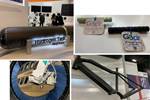






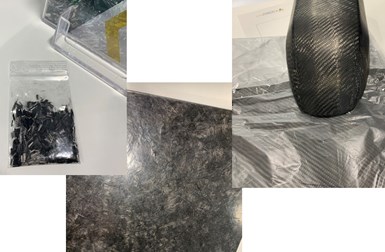

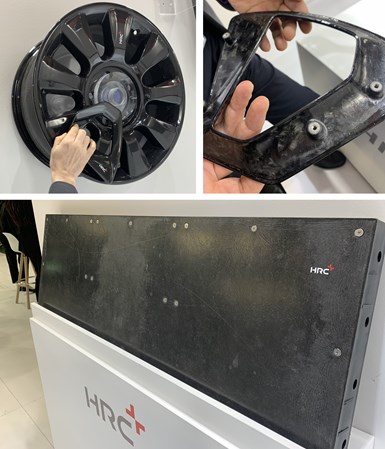
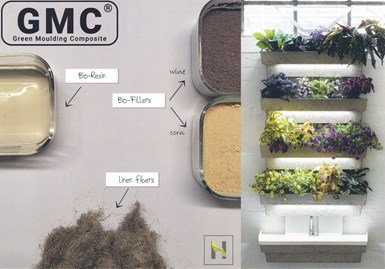
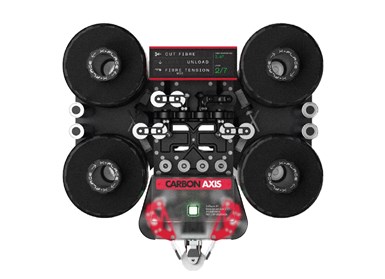
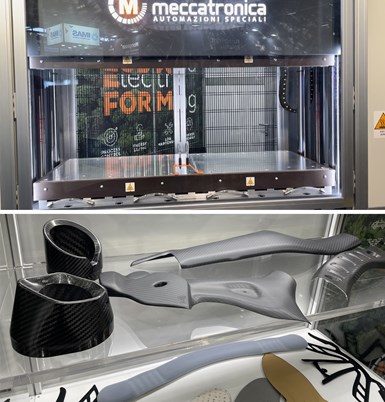
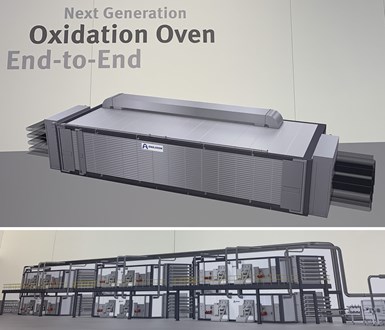
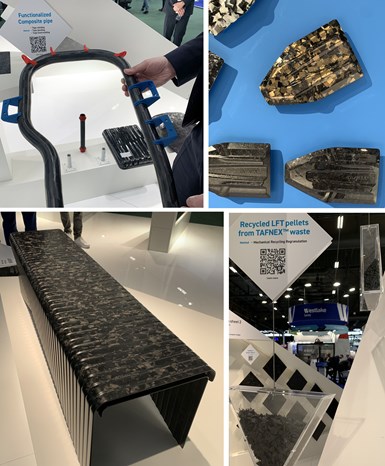















.jpg;maxWidth=300;quality=90)





